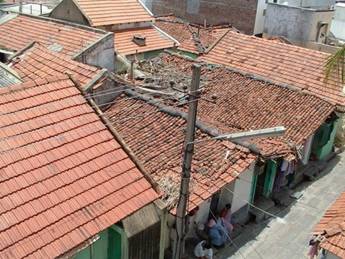|
By: Ragoorao
Raghavendra Rao ( RagooRao) is studying ecology and wild animal behavior; He is
involved in study of birds lives, comparitve study of captive zoo animals with their
wild counterparts, photography and videography of nature and automobiles. He is
a member of World Wide Fund, National Geographic Society and US Bird Forum. He is
currently living in Mysore city. He can be contacted at
ragoorao@gmail.com .
Places of study : Mysore Urban areas and the Suburbs of Mysore.
Period: From 1988 onwards.
Introduction
The house sparrow is a confirmed hanger on to man ever since human habitation started
depending on agriculture. It has even been mentioned in most of our Mythologies
and Folklores, along with the Common crow, Eagles and other such birds, which used
to exist in close proximity to human dwellings. It was once a very common bird all
over
The country whether it was a bustling urban area or a small hamlet. In South India
people even considered it a Good omen if the house sparrow built a nest inside their
houses under the rafters or a niche in the wall. Such was the bond between Man and
Sparrow that it came to be classified as a Domestic species and hence the name Passer
domesticus.
Observations
 I have closely observed the Domestic sparrow ever since their number started declining
in our urban area. This was the year 1998. I had found a lot of trees with close
foliage and small branches in our area being filled with flocks of the birds creating
a din with their constant chirping and setting up their roosting order. Once it was dark, they would
all settle down peacefully until the next dawn. Come dawn and the first rays of
sunlight would get them going about their daily life. A lot of birds were roosting
inside homes, specially the solitary males and the juveniles. Gradually this everyday
feature of the sparrow roosting in our trees and their all too familiar chirping
started getting lesser and lesser. Homes were never used for their night roosting;
the nests being built inside houses were also fading away over a three-year period.
I have closely observed the Domestic sparrow ever since their number started declining
in our urban area. This was the year 1998. I had found a lot of trees with close
foliage and small branches in our area being filled with flocks of the birds creating
a din with their constant chirping and setting up their roosting order. Once it was dark, they would
all settle down peacefully until the next dawn. Come dawn and the first rays of
sunlight would get them going about their daily life. A lot of birds were roosting
inside homes, specially the solitary males and the juveniles. Gradually this everyday
feature of the sparrow roosting in our trees and their all too familiar chirping
started getting lesser and lesser. Homes were never used for their night roosting;
the nests being built inside houses were also fading away over a three-year period.
The all too familiar birds, which would fill our gardens and lawns for foraging
on insects, were getting rarer and rarer. Then finally by 1992 there was not a single
house sparrow in our area. This period is what puzzled me. It even became a Topic
during socialization. Some would ask, where did the sparrows go? While some had
their own diagnosis of the problem. They were as varied as outlandish. Some attributed
the Mobile phones sound waves to be the reason while others said it was the radiation
from outer space.
Since I am a person who would everyday visit Plantations and farms, I had to pass
through a lot of small and big villages. I noticed the sparrows in a lot of villages
as though nothing had happened to them. This is from where I started the study.
In comparing the two regions- The Urban and the rural areas, the reasons for the
dwindling of sparrows were getting more into focus everyday.
First: sparrows were dependent on the leftover grains thrown to them after
people cleaned their grains. This habit has ceased in urban areas as everyone is
getting pre-cleaned grains from the store and there was nothing to be thrown to
their yards for the sparrows to feed on. This habit of still throwing leftover cleaned
grains to the sparrows still continues in the rural sides and also in undeveloped
localities inside cities. This shows a shortage of food grains in urban areas and
still available food sources in the rural and undeveloped localities. Sparrows are
still in good numbers in these rural and undeveloped areas.
Second: Sparrows were always in the habit of building nests in tiled houses
under the rafters, niches in the gables, and in some houses intentional holes were
made near the roofing to accommodate sparrow nests. They are found to build nests
in hanging lampshades, wall clocks, behind photo frames hung on walls. Now the urban
scene has changed, there are no tiled houses with rafters, only concrete structures
have come up, there are absolutely no places for the sparrows to build nests. .Whereas
in rural and undeveloped areas there still tiled houses with bamboo rafters, intentionally
made niches in walls for nesting sparrows. This suggests to the conclusion that
sparrows were deprived of nesting places in the urban developed areas, whereas they
are still nesting and thriving the undeveloped localities and villages.
 House sparrows are omnivorous, they live mainly on grains but they also relish insects.
They bring up the young exclusively on insects. Until recent times home gardens
were not in the habit of using chemical insecticides in their gardens. The lawns
raised in big compounds were also the native variety of grass, which was a little
tall and needed constant moving. But this kind of native grass was hardy and did
not need pampering except a good spray of water. These lawns were also harboring
a lot of insect life. The sparrows were foraging for insect larvae in these lawns
for feeding their young. Now in urban areas all gardens are liberally sprayed with
insecticides and fungicides, the native lawn grass has been replaced by the short
non moving Mexican grass. This grass needs a lot of support with fertilizers and
plant protection sprays. These lawns do not support any insect life in them. Whereas
in the villages and undeveloped localities these pesticides are not used. Whatever
little kitchen gardening they practice, still, farm yard manure is used encouraging
insect life, which ultimately the sparrows feed the young with.
House sparrows are omnivorous, they live mainly on grains but they also relish insects.
They bring up the young exclusively on insects. Until recent times home gardens
were not in the habit of using chemical insecticides in their gardens. The lawns
raised in big compounds were also the native variety of grass, which was a little
tall and needed constant moving. But this kind of native grass was hardy and did
not need pampering except a good spray of water. These lawns were also harboring
a lot of insect life. The sparrows were foraging for insect larvae in these lawns
for feeding their young. Now in urban areas all gardens are liberally sprayed with
insecticides and fungicides, the native lawn grass has been replaced by the short
non moving Mexican grass. This grass needs a lot of support with fertilizers and
plant protection sprays. These lawns do not support any insect life in them. Whereas
in the villages and undeveloped localities these pesticides are not used. Whatever
little kitchen gardening they practice, still, farm yard manure is used encouraging
insect life, which ultimately the sparrows feed the young with.
Conclusion
Insect food diminished to a great extent in urban areas but still plenty in rural
and undeveloped localities. Apart from these major factors contributing to the decline
of sparrows in urban areas there could be quite a few other factors also like; high
automobile pollution with a lot of lead being released into the atmosphere which
might have had a residual effect on the eggs of sparrows making them thin shelled
like it has been observed in other countries in their research on other birds. Higher
noise pollution might have also caused a disturbance to them.
 The observations which I have made, in my opinion, can be summarized into these
main factors:
The observations which I have made, in my opinion, can be summarized into these
main factors:
- Loss of nesting sites.
- Loss of insect population to bring up a brood.
- Loss of roosting shrubs.
In effect a total loss of habitat in urban areas.
The encouraging thing is one can
still find the much loved house sparrow in the rural hamlets and also in the urban
areas in isolated pockets where the environment is still congenial to them in their
basic requirements.
|